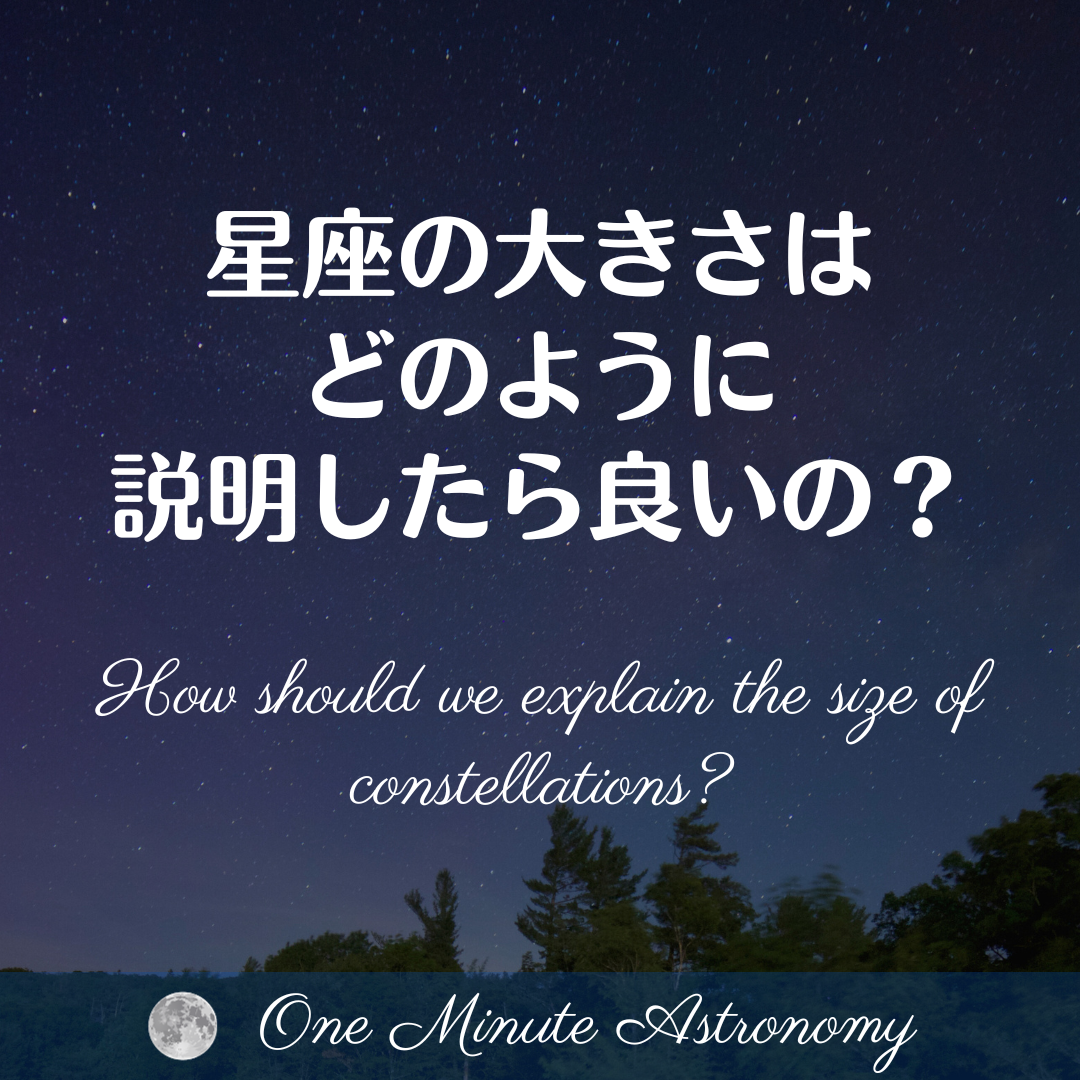
*星座の大きさはどう説明したら良いの?
星空を見ていて、今日は月が大きく見えた、とか、○○座は意外と大きかった、などその大きさを誰かに伝えたい時があります。星座や星々の見かけの大きさはどう説明したら良いのでしょうか。長さを表すcmでしょうか?例えば腕を伸ばして物差しで測ろうとすると、目の近くで測ると小さくなったり、腕を伸ばして測ろうとすると腕が長い人だとより大きくなってしまったりして、客観的な指標としては使えません。よって、夜空の星々の見かけの大きさは「度」で表します。夜空の星(頂点A)と星(頂点B)、そして自分の目(頂点C)を頂点とする三角形をイメージし、2つの星の距離は角ACBになります。例えば、太陽の見かけの大きさは0.5度、オリオン座の三つ星の距離は3度と表現します。実際に観測する時には、手の物差しを使ってみましょう。腕を伸ばした時の小指の幅が1度、こぶしの幅が10度、開いた手の平が20度です。高さや距離を表現する時の参考にしてみてください。
*How should we explain the size of constellations?
When explaining the size of constellations, there's often a challenge in effectively conveying their magnitude to others. Moments arise during stargazing when one wishes to articulate observations like "the moon appeared larger today" or "a particular constellation seemed unexpectedly sizable." Describing the apparent size of stars and constellations poses a dilemma: how best to communicate it? Is it through centimeters of length? However, attempting to measure with a ruler or by extending an arm leads to subjective outcomes—measurements vary when taken closer to the eye or by individuals with different arm lengths, rendering it an unreliable standard.
Therefore, the apparent size of celestial objects in the night sky is quantified in "degrees." Imagine a triangle with stars (point A and B) as vertices and your eyes (point C) as the third. The distance between two stars forms angle ACB. For instance, the sun's apparent size measures 0.5 degrees, while the distance between the three stars in Orion's Belt spans 3 degrees. When observing, try using your hand as a measuring tool: the width of your pinky finger when extended equals roughly 1 degree, a clenched fist spans about 10 degrees, and an open hand measures approximately 20 degrees. Use these references as a guide when expressing height or distance in stargazing observations.


